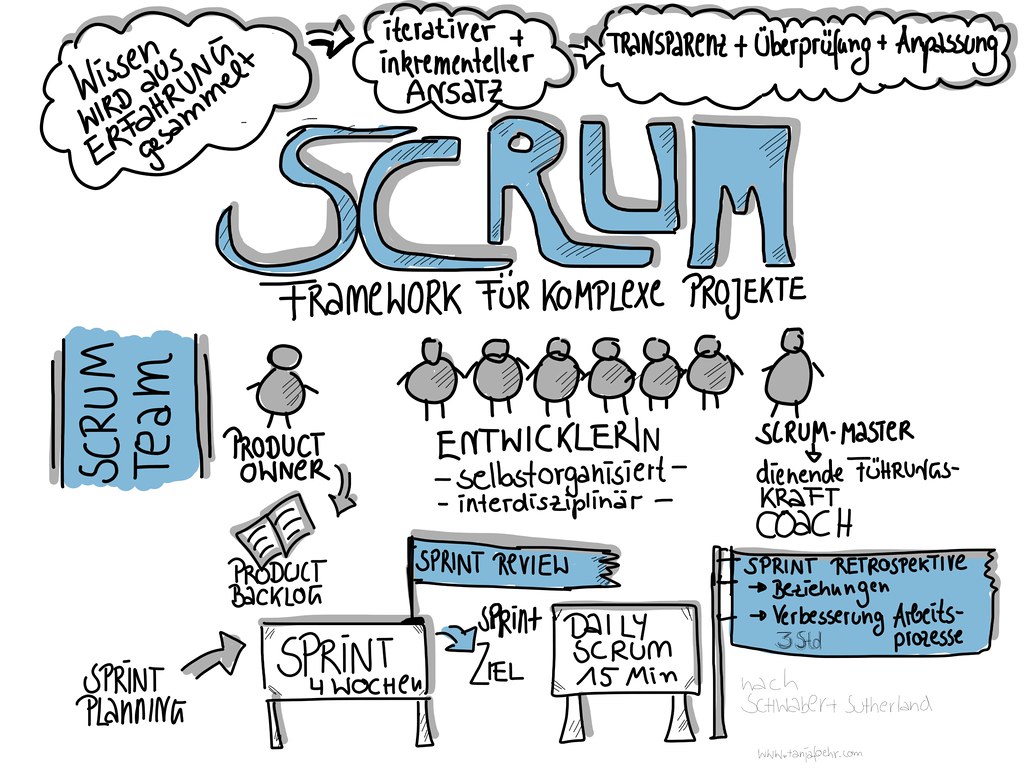Scrum Theory - A Framework for Agile Success in Complex Environments
Scrum is an agile methodology designed to provide effective and efficient project management in complex environments where flexibility, rapid iteration, and client satisfaction are paramount. Scrum’s structured framework is built around well-defined sprints, enabling teams to adapt quickly to changes, consistently deliver valuable increments, and continuously align the project outcomes with the client’s expectations. In this post, we will explore Scrum’s theory, its key components, and how it thrives in challenging environments through iterative development and a highly collaborative approach.
Iterative Development Through Sprints
The backbone of Scrum is its iterative development approach, characterized by time blocks called sprints, usually lasting a month. Sprints enable teams to break down complex projects into smaller, manageable chunks that can be delivered incrementally.
- Regular Deliveries of Product Increments: Each sprint concludes with a fully functional product increment, ready for review by the customer. These product increments are not prototypes or unfinished versions but working parts of the final product, offering immediate value to the client. This approach ensures that, at any given point, stakeholders have something tangible they can use or evaluate.
- Prioritized Requirements: The product backlog, managed by the product owner, contains a prioritized list of requirements that drive development. This list evolves with every sprint, reflecting new insights and client requirements, thereby enabling the team to always focus on delivering the most valuable features.
Scrum’s reliance on sprints not only fosters a continuous feedback loop but also enables rapid adaptation, ensuring the project aligns with evolving business requirements and market conditions.
Iterative Development in Scrum
Customer Involvement and Flexibility
One of the core tenets of Scrum is continuous customer involvement, which helps manage expectations and adapt the project based on client needs.
- Customer’s Role in Prioritization: The customer actively participates in prioritizing the product backlog. This means that, at the start of each sprint, requirements are revisited, reassessed, and reordered to ensure that the highest value features are always addressed first. The ability to adjust priorities at the beginning of each iteration provides flexibility to adapt to market changes or shifts in business needs.
- Incremental Delivery: Scrum enables customers to use early iterations of the product before it is fully developed. This early use offers a competitive advantage, allowing the client to respond quickly to market opportunities. The result is a faster return on investment as clients begin realizing value from the product even before it is completed in its entirety.
The iterative delivery process in Scrum helps mitigate risks by providing a clear structure for revisiting and refining features, thereby ensuring that project outcomes always align with client goals.
Risk Mitigation and Team Dynamics
Managing risks effectively is a critical aspect of any agile methodology, and Scrum is particularly adept at mitigating risks through its structured and transparent approach.
- Risk Planning and Early Identification: Scrum teams prepare risk plans and identify potential issues during each sprint planning session. By breaking down the project into smaller tasks, teams can detect and address risks earlier in the process, saving time and effort. Early feedback from each sprint iteration provides an opportunity to identify unforeseen challenges and implement solutions proactively.
- Balanced Workload and Team Motivation: Risks in Scrum are distributed across sprints, preventing an overwhelming workload at the end of the project. The iterative approach encourages teams to tackle the most challenging tasks early, rather than postponing them, which helps keep morale high and maintains a steady pace of productivity.
The Scrum methodology’s transparent structure—with frequent planning and review meetings—fosters an environment where risks are addressed collaboratively, and the entire team takes ownership of the solutions.
Enhancing Productivity and Team Collaboration
Scrum emphasizes a collaborative environment where the productivity and cohesion of the team are prioritized.
- Regular Meetings and Transparency: Daily stand-up meetings, sprint reviews, and retrospectives are fundamental Scrum practices that enhance communication. These meetings ensure that everyone is on the same page, that progress is visible to all team members, and that any impediments are quickly addressed. This regular communication helps the team synchronize their work, make informed decisions, and stay motivated throughout the project lifecycle.
- Self-Managing Teams: Scrum promotes self-managing teams that have the autonomy to decide how to accomplish their goals within each sprint. By empowering teams to plan their work and determine the best way to achieve their objectives, Scrum fosters a motivated and accountable environment. Self-management also drives creativity, enabling the team to devise innovative solutions to project challenges.
The collaborative and transparent practices embedded in Scrum ultimately lead to higher productivity and a higher-quality product, as team members feel more engaged and aligned with the project’s goals.
Scrum’s iterative approach, emphasis on customer collaboration, proactive risk management, and dedication to fostering a motivated and productive team all contribute to its effectiveness as an agile framework. In environments where requirements are constantly changing, and rapid adaptation is necessary, Scrum provides a structured yet flexible path to success. By focusing on delivering high-value increments, involving the customer at every stage, and ensuring transparency within the team, Scrum helps organizations achieve their goals more effectively.
For teams looking to adopt an agile approach, understanding and implementing Scrum practices can lead to significant improvements in project outcomes and customer satisfaction. Explore the references provided for more detailed insights into how Scrum can be applied to meet the demands of complex and fast-paced development environments.
